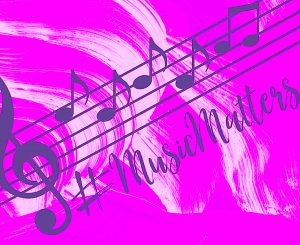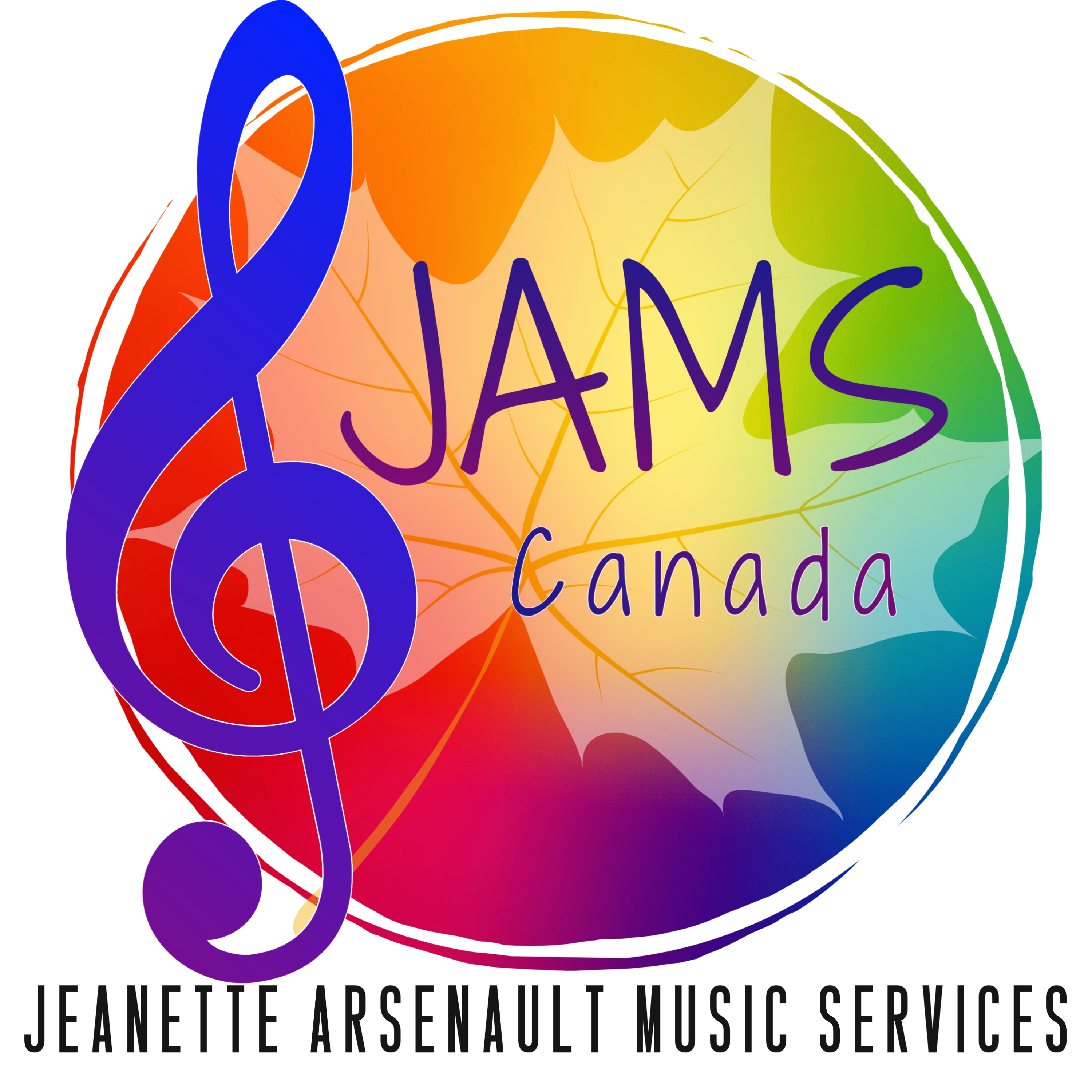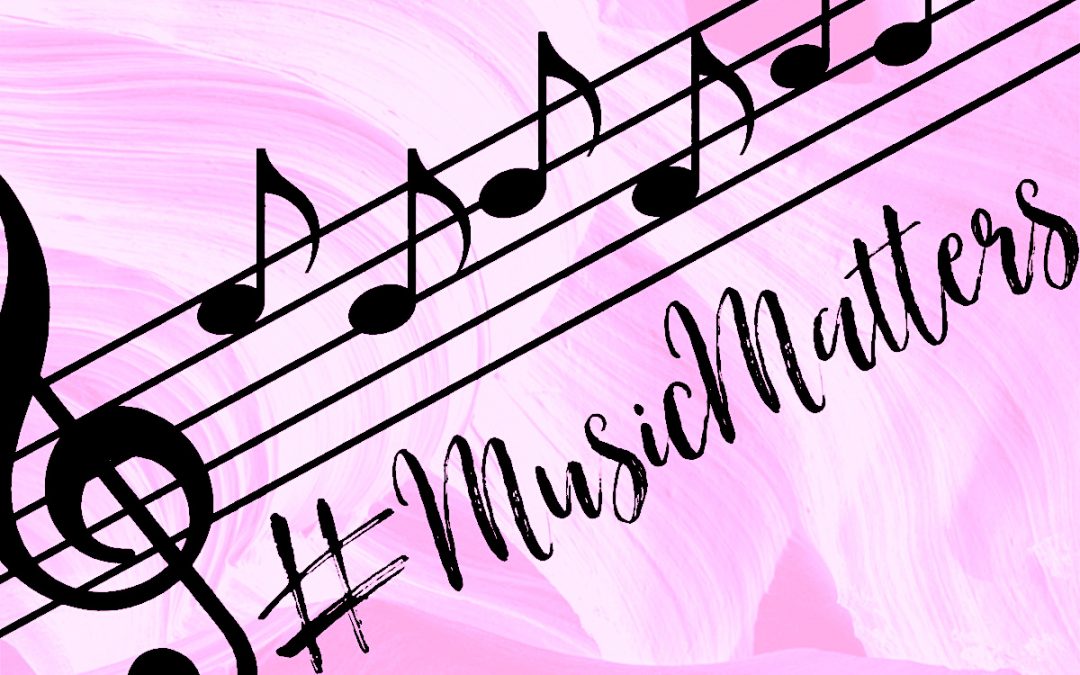
Welcome to the seventh instalment of Monday #MusicMatters as part of the JAMS Canada PRO Series – “Here’s What I Know”.
We caught up with Jennifer Litke about graphic design, branding & social media
How important are graphic design & visuals to musicians?
I can’t draw anything to save my life. I took a fashion course in high school and realized I would be terrible because I couldn’t sketch anything with any sort of reliability or skill. I abandoned that idea pretty quickly. But I am an artist. I am a writer and a musician and an actor and a graphic design artist. The concepts that apply to each are universal. Art serves two basic functions; a mode of expression for the artist, and emotional reaction for the audience. Art’s value is not always inherent in its financial valuation and that is what makes it priceless. But in the sphere of the music industry, art does have monetary value.
Consider Nirvana’s Nevermind Album cover. The artwork is provocative but simple. But the image is forever attached to the musician, the songs and the haunting truth of its frontman’s suicide. That image is now iconic.
The association of an album cover or poster art work to the musician is critical. It tells a story. It is often the first thing a prospective buyer will see when they pick up an album or are scrolling through social media. Graphics are what catch the eye, the melodies capture the heart. And these dynamics are inextricably linked.
When I am creating any sort of graphic my goal is always to capture the audiences’ emotional reaction.
As the author of the People of PEC (Prince Edward County ON), what makes you choose one story over another?
In writing I love when I am able to bring tears to someone’s eyes. It means I have created something that touches their soul. As part of my project People of PEC, the stories I select are based on that principle. A subject’s personal story often will resonate with an audience; a personal struggle, a tragedy, overcoming a hurdle, achieving something great despite personal obstacles. Connecting a person’s humanity with an audience is what creates authenticity. It’s the same principle in graphic design. You want something that creates an emotional response, whether it’s humorous or beautiful or sad or angry. That emotional reaction has to occur in me first. So in serving the needs of a client I first consider what message they are trying to convey with their project, and then I seek out to replicate that with something that might trigger an emotional reaction.
Why should photos & images be rendered?
The next part is rendering an image that will grab attention. In the modern age of digital media, images are everywhere. Anyone with a computer or a smartphone can easily create a meme and share it, and depending on the context it could go viral. Oftentimes the reasons are arbitrary and there is no rhyme or reason. The attention span of today’s modern audience is much shorter than in previous years. Understanding that and in order to achieve my first objective, I need to use ideas that will hit the audience quickly and draw them in. Using repeated concepts such as branding or fonts give a familiarity that will build trust with an audience, but using too many images over and over will cause audiences to scroll past believing they have seen that before. It is a fine line, but one that with experience, or trial and error will help a musician achieve their marketing goals.
With new musicians, building trust with audiences is key to drawing in a following. Every new artist just beginning their career sets out to be the next Nirvana, or Rolling Stones, or Dolly Parton, but they first need to establish an audience. If a musician has an established audience base, that part is easy. The audience exists and any graphics or branding will instantly be trusted, but a new artist seeking to break into the market will need to use different tactics in order to gain attention. In short order, it’s almost like utilizing manipulation in order to get the people to follow you. But once you have the audience, and they like what they hear, they will trust you.
So when I render an image or a graphic, it is to serve both functions; serve the client’s needs, and draw in an audience. But the landscape of social media is changing very quickly.
What is your view on graphic design & social media?
Facebook and Instagram are still the heavy hitters, but with younger audiences, the rich market is on TikTok or Snap Chat. It is best to know the market you are playing to. An artist who is able to adapt quickly will succeed in this rapidly changing market. For instance, I found a young musician on TikTok who created a short video clip about how she felt no one truly saw her and how she was repeatedly told she would never accomplish anything. It was a sad video; she was dressed in a simple white t-shirt with no make-up and she appeared to be alone in her bedroom. The likes and engagement on her video was tremendous, in the tens of thousands. But then she revealed in the video that the background track was her song playing that she had written. It was a gorgeous haunting track. I searched for her on Spotify, and she has 45,000 daily listeners. It was an impressive bit of social media manipulation that garnered her tangible income. And she accomplished all of that using a quickly growing new social media platform.
So as a graphics design artist and a social media manager, it is crucial that I stay fluent in all social media platforms. It’s how I can best direct a client to where their target market will be. And those details heavily influence how I create a brand profile. It’s no longer just pretty graphics on Facebook. Websites are helpful, but are a last resort for anyone clicking through the internet. With most platforms being utilized via a smartphone, application based programs are the heavy hitters. You want to be visual, you want well curated content that gives your audience a reason to engage with you, and you need easily-identified marketable viability. As a musician, your marketable viability is your music. The rest is strategy. Utilize what works, abandon what doesn’t, and in some cases replicate what has worked for others. And what worked for others might not work well for your brand, and that’s okay, try a different approach. While your art is personal, priceless, and an expression of your soul, in order to make it profitable you do need to strategize as to how best brand your art in order to make a living.

Graphic design and social media management goes hand-in-hand as a result. Due to modern technology they are now intrinsically linked. It’s important for marketing that you have a solid base across all platforms, including a website. Most social media platforms allow for cross posting, meaning if you post to one it will post to all, and in that regard it can be a massive time saver when creating content. It’s vital your audience is able to connect with you in whichever format they seek you out on. Doing so will reinforce brand recognition. But keep it simple. Your user name should be easily remembered and easy to find. Complex user names are harder for users to tag you or search you out. Names with a lot of numbers following them are even harder, it means your user name is too simple and the platform is saturated. The strategy is to find a name that will have sticking power in your audience’s memory but unique enough that it stands alone.
Have a logo designed, find what gains the greatest reaction and then stick to it. Some marketing principles never change, and a logo brands you with a solid identifier. Once you have a logo, attach it to as much as you can. And any content you put on social media should have your social media tag attached so when it is shared, it can be easily attributed back to you.
What advice to you have about musician’s social engagement?
My final piece of advice is this: don’t be afraid to be provocative. Creating an angry response can actually work to your benefit, especially in a culture where political rage fuels social media engagement. Recently, Lady Antebellum and the Dixie Chicks changed their name to Lady A and The Chicks respectively. Their decisions, which were largely based in public outrage over the senseless death of George Floyd and the Black Lives Matter movement, have created a public discourse and a controversy. But it also put them on a platform. They have visibility. And it’s working for them. Don’t ever underestimate anger in your marketing plan, but use it wisely. You won’t be able to use it indefinitely and in doing so you could alienate your base, but using it at strategic points will help propel you into a new sphere. And when you have captured an audience, it becomes that much more important to retain them. Being consistent and visible will bring you the greatest success.
BIO
Jennifer Litke is a wife, mother of three boys and a woman of creativity and adventure. The creator of People of PEC and Conceived Blog is also the new creator of Wild Grace Design Services.
She specializes in writing and creating brand content for social media and marketing. She is a farmer’s wife who moved to Prince Edward County over twenty years ago and has forged a creative path toward pursuing her artistic endeavours. She adores the region she calls home, particularly the food and wine, but also the expansive countryside and the large open skies.
Recently she helped spearhead the Canada Day PEC 2020 Virtual Campaign for Prince Edward County.
You can see her work at PeopleofPEC.ca and on Facebook and Instagram under People of PEC, Conceived or Wild Grace Design Services.
Facebook: @jenniferlitke
www.peopleofpec.ca
______________________________________________________________________________________________________
Look for more JAMS Canada PRO Series “Here’s What I Know” Monday #MusicMatters here on our website and on Facebook, Twitter, Instagram and Linked In.
Some contributors also responded with videos – please visit & subscribe to our JAMS Canada YouTube channel: https://www.youtube.com/channel/UC-CmaB7MV0r1ehhveBPmBEg


Recent Comments